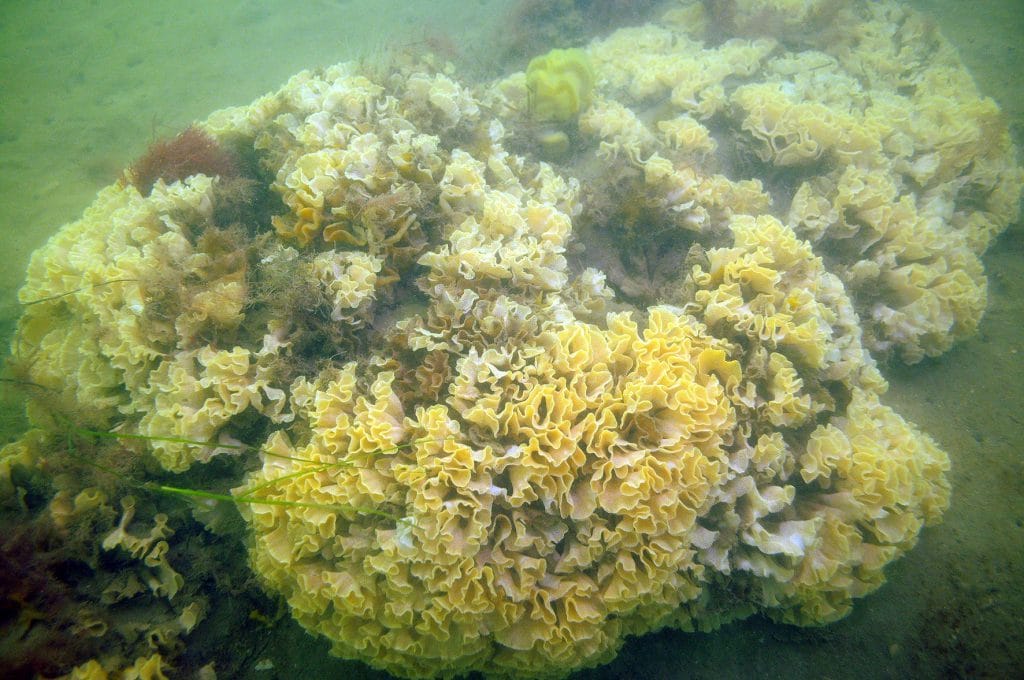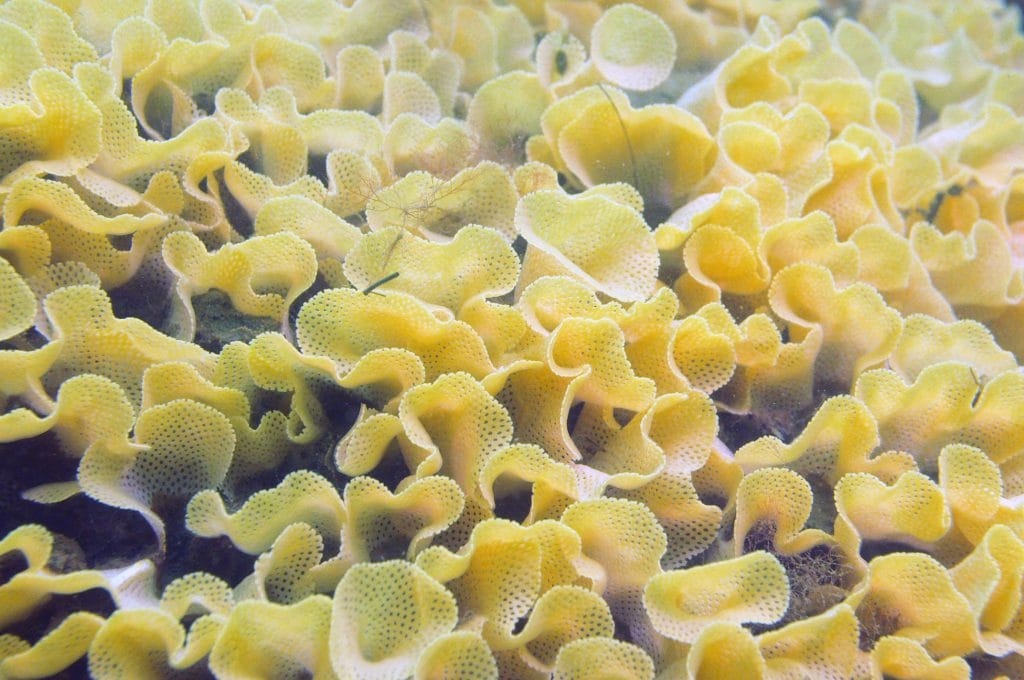
Western Port Bryozoan Reef Project
Project Date 2020
In 2016, Fathom Pacific and research partners La Trobe University developed The Western Port Bryozoan Reef Research Project. The project involves new research into a biotope of national and international significance, hidden until now. Through collaborations with Victorian Fisheries Authority, AGL and the Port Phillip and Western Port Catchment Management Authority, the research project is investigating:
- Reef Type and Extent
- Macrofauna communities
- Fish biomass
- Age and growth characteristics
- Citizen science monitoring opportunities
- Conservation values and threats and conservation values
- Monitoring requirements.
The biogenic reef substrate is comprised of three species of bryozoan: Triphyllozoan munitum , Triphyllozoan moniliferum and Celleporaria foliata. These form large colonies that reach a maximum of 1.5 m vertical relief. There are two forms of reefs: continuous linear reefs and patch reefs. The known extent of the community covers an area of 1.74 km2 and is unique nationally and most likely globally.

The Western Port Bryozoan Reefs are unique in that they form extensive shallow water biogenic reefs with high relief that are not seen elsewhere. The bryozoan reef community of Western Port occurs in a turbid, low light environment in relatively shallow water (5-12 metres). Their distribution is restricted and research to date suggests that a combination of depth, low light conditions (which precludes competitive algal growth), currents and planktonic food resources are among the factors limiting their extent.

To the best of our knowledge and that of international experts in the field of bryozoan research, the bryozoan reef community of Western Port is unique in the state of Victoria and Australia. Based on research to date, this biotope is likely to be of global significance as there are no other records of fenestrate (net-like) bryozoans forming continuous reef structure, with high vertical relief, in shallow water occurring anywhere else in the world.
